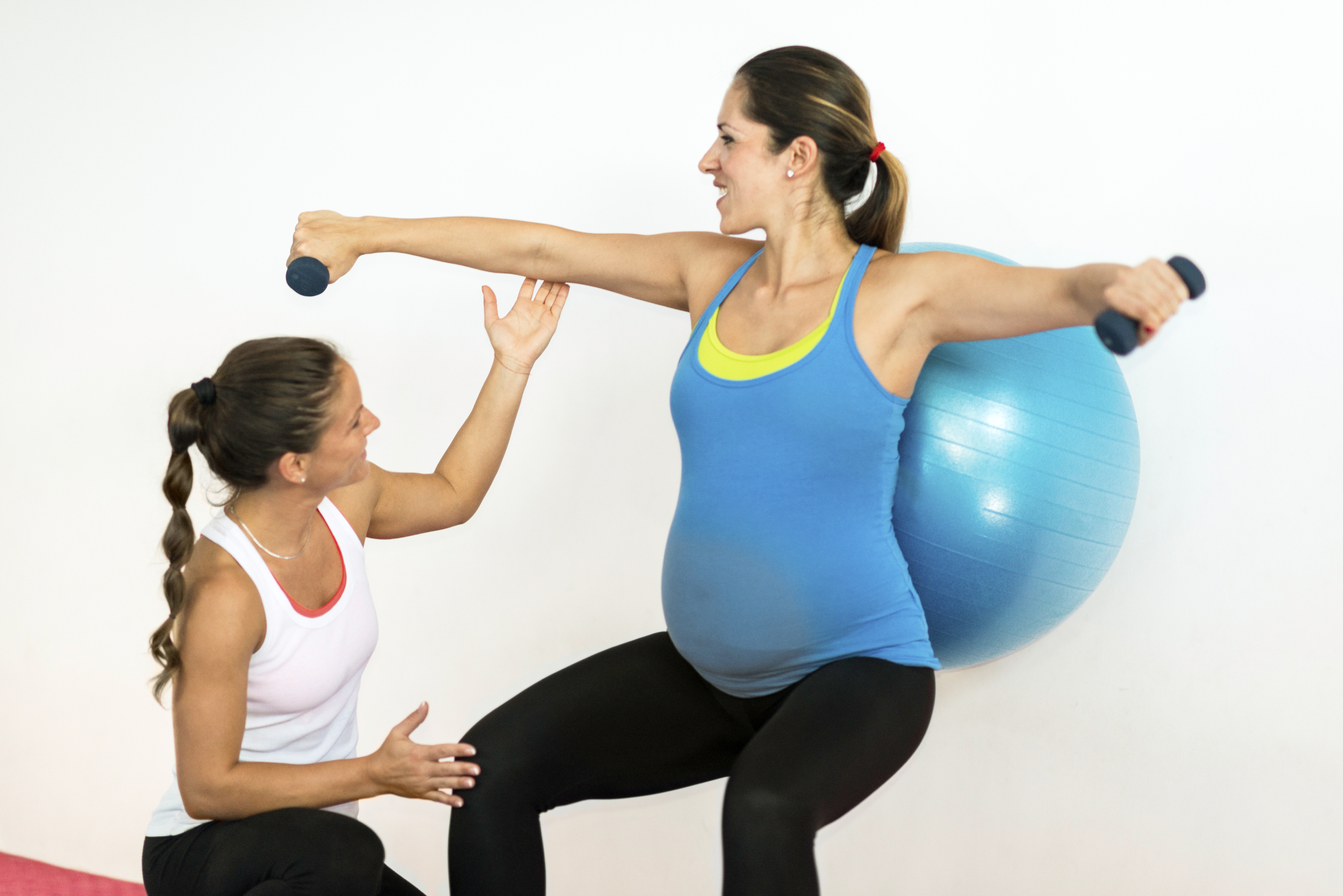Holistic:
Achieving a harmonious whole that is more than the mere sum of its parts.
Wellness:
Being healthy in body and mind, especially as the result of deliberate intention.
Despite living in an age that demands quick answers and pill-popping mindsets, the synergistic combination of basic wellness factors may prove more effective for preparing our mothers-to-be and their unborn children. For fitness professionals, understanding foundational elements beyond exercise is critical for inspiring the highest level of health for our pre and postnatal clients.
Pregnancy offers a unique opportunity for re-establishing wellness. There are three unsettling trends in the modern world of baby-making.
One, many couples cannot get pregnant. Infertility is defined as the inability for a couple to conceive after trying to do so for longer than one year, not just after a few tries. The U.S. infertility rate is one in eight, according to “Reduce Chemicals to Increase Fertility” on WebMD. Other modern countries, such as the U.K. and Canada, now have rates that are even worse. According to an article called, “Infertility Time Bomb Warning” from BBC, that figure in the UK is one in seven and Assisted Human Reproduction Canada puts their country’s figure at one in six. And rates are steadily rising everywhere, as are the recognition of problems associated with assisted reproductive technology (ART).
Two, if a woman is able to conceive, there is a significant chance that surgery or pharmaceutical drugs will accompany her labor and delivery of her child. One in three women will be given the minor surgery called episiotomy and another one in three will have the major surgery called C-section. In addition, various drugs will be administered to the majority.
Three, after climbing the hill of conception, pregnancy, labor and then delivery, the risk of your client’s child fast succumbing to developmental disorders and disease is profound. Autism, ADHD, asthma, obesity, diabetes, and cancer have been rising over the last few decades.
Science increasingly proves that disorders like these are a multifactorial combination of stress, environmental factors and personal health choices. Evidence for a preventive and integrative approach has been mounting.
Causes for both infertility and infant and childhood disease have brought prenatal food choices, pharmaceutical drug usage, toxic household products, and perinatal stress to the forefront. For example, on May 10, 2012, the European Environment Agency captioned “Chemicals which disrupt the hormone system—also known as ‘endocrine disrupting chemicals’ (EDCs)—may be a contributing factor behind the significant increases in cancers, diabetes and obesity, falling fertility, and an increased number of neurological development problems in both humans and animals, according to a review of recent scientific literature commissioned by the European Environment Agency (EEA).” The EEA reports that these chemicals can be found in “food, pharmaceuticals, pesticides, household products and cosmetics.”
Another example is an Infertility Fact Sheet published by the U.S. Department of Health and Human Services Office of Population Affairs (OPA), which asks the question, “What decreases the chance of getting pregnant?” The answer included a list of preventable causes: stress, poor diet, drugs, environmental toxins, among others. And a 2004 National Cancer Institute (NCI) Fact Sheet specifically discusses causative factors for child health: “…parental medical conditions during pregnancy or before conception; maternal diet during pregnancy…”
In other words, big governmental agencies around the world have already established that infertility and infant disease may be due to preconception and perinatal conditions and choices that parents make before and while pregnant. And the solutions are found in stress reduction, nutrition, environmental toxin reduction, and overall maternal health—four “medicines” that are difficult to bottle and sell.
Fitness professionals are often the primary source of overall health information for our clients. In addition to exercise, we can coach our clients in techniques for de-stressing, reducing household toxins, remaining well-hydrated, and eating natural foods.
What follows are some key facts and coaching considerations that can easily be added to your coaching during a personal pre-conception or prenatal training session.
“Positive maternal emotions have been shown to advance the health of the unborn child,” says Thomas Verny, MD, who is the author of Pre-Parenting, Nurturing Your Child from Conception, and considered one of the world’s leading authorities on prenatal psychology. Verny continues, “…thoughts which infuse the developing baby with a sense of happiness or calm can set the stage for a balance, happy, and serene disposition throughout life.” Although a multitude of methods exist, from visualization to meditation, prayer, and journaling, finding a method that you and your clients believe in is the key.
 Choosing natural household products and cleaners is another big step toward finding prenatal wellness. Many people do not realize that most of their dangerous environmental toxins are usually ones they’ve brought into the home themselves. Key areas for your pregnant clients to look into are: filtering drinking and bathing water, buying natural household products, avoiding chemical cosmetics and synthetic air fresheners, and staying far away from any lawn that has been treated with pesticides or fertilizers.
Choosing natural household products and cleaners is another big step toward finding prenatal wellness. Many people do not realize that most of their dangerous environmental toxins are usually ones they’ve brought into the home themselves. Key areas for your pregnant clients to look into are: filtering drinking and bathing water, buying natural household products, avoiding chemical cosmetics and synthetic air fresheners, and staying far away from any lawn that has been treated with pesticides or fertilizers.
Drinking water is the first nutritional component that most pregnant women should consider, since the majority of women are dehydrated prior to conception. Then once pregnant, the developing fetus places enormous demands for water. F. Batmanghelidj, MD, (“Dr. B”), author of books like, Your Body’s Many Cries for Water and Water for Health, for Healing, for Life, discusses pregnancy: “By the time it grows to be a full term baby, about a trillion cell divisions will have taken place.” He also says, “Every time a cell gives rise to a daughter cell, 75 percent or more of its volume has to be filled with water. In short, growth depends on the availability of water.” The importance of water in the pregnant body is further emphasized with the following jingle that I’ve often heard one of my mentors, Paul Chek, HHP, announce: “The solution for pollution is dilution.” Water is needed to flush daily cellular (and other) toxins away from mother-to-be as well as baby.
Then there are the foods our pre-conception and pregnant clients are eating. In a nutshell, it seems wise to choose natural unprocessed “in-tact” foods that are not grown with chemicals or pesticides. “The diet we enjoy in the twenty-first century differs markedly from the diet enjoyed by past generations,” says Carol Simontacchi, certified clinical nutritionist, and author of The Crazy Makers: How the Food Industry is Destroying Our Brains and Harming Our Children. She explains the traditional diet of past generations, “The one commonality they have is that the traditional diets are nutrient-rich in proteins, essential fats, unrefined carbohydrates (in the form of brightly colored vegetables and limited grains and fruit), and micronutrients (vitamins, minerals, and enzymes).” Even more, “Our diet of highly processed foods and artificial beverages,” compares Simontacchi, “doesn’t build better babies.”
Of course, exercise is a powerful “medicine” for perinatal women. And it is now research-proven to be a remarkable aid in the birthing process. Several decades of research was performed by Dr. James F. Clapp, III, and published in Exercising Through Your Pregnancy, now in its second edition. Concerning labor difficulties, Clapp writes, “The women who continued to exercise had a striking increase (more than 30 percent) in the incidence of uncomplicated, spontaneous delivery, and, the duration of active labor was much shorter.” In fact, the percentage improvement regarding necessity of drugs and surgery during delivery is astounding for women who exercised, and is detailed one after the other in Clapp’s research. Clapp summarizes, “All aspects of growth and development after birth in babies from exercising mothers are equal to or better than those observed in the [offspring of mothers who did not exercise.]”
If you are a wellness professional who works with clients who are pregnant or who will one day want to be pregnant, teaching them to apply just some of these foundational components is critical to providing the highest quality service to your clients.
Considerations for the pre and postnatal fitness professional:
- Lead your client through some kind of mental imagery, meditation or positive journaling as part of her session time with you.
- Offer your client a session at the grocery store, where you coach her on choosing healthier foods and home products.
- Help your client track her water intake. (Other beverages generally don’t count).
- Inspire her to maintain her exercise even during challenging times of pregnancy (ie. morning sickness, third trimester discomforts). Consider offering shorter sessions, and/or video call sessions that make it convenient for her to work with you.

